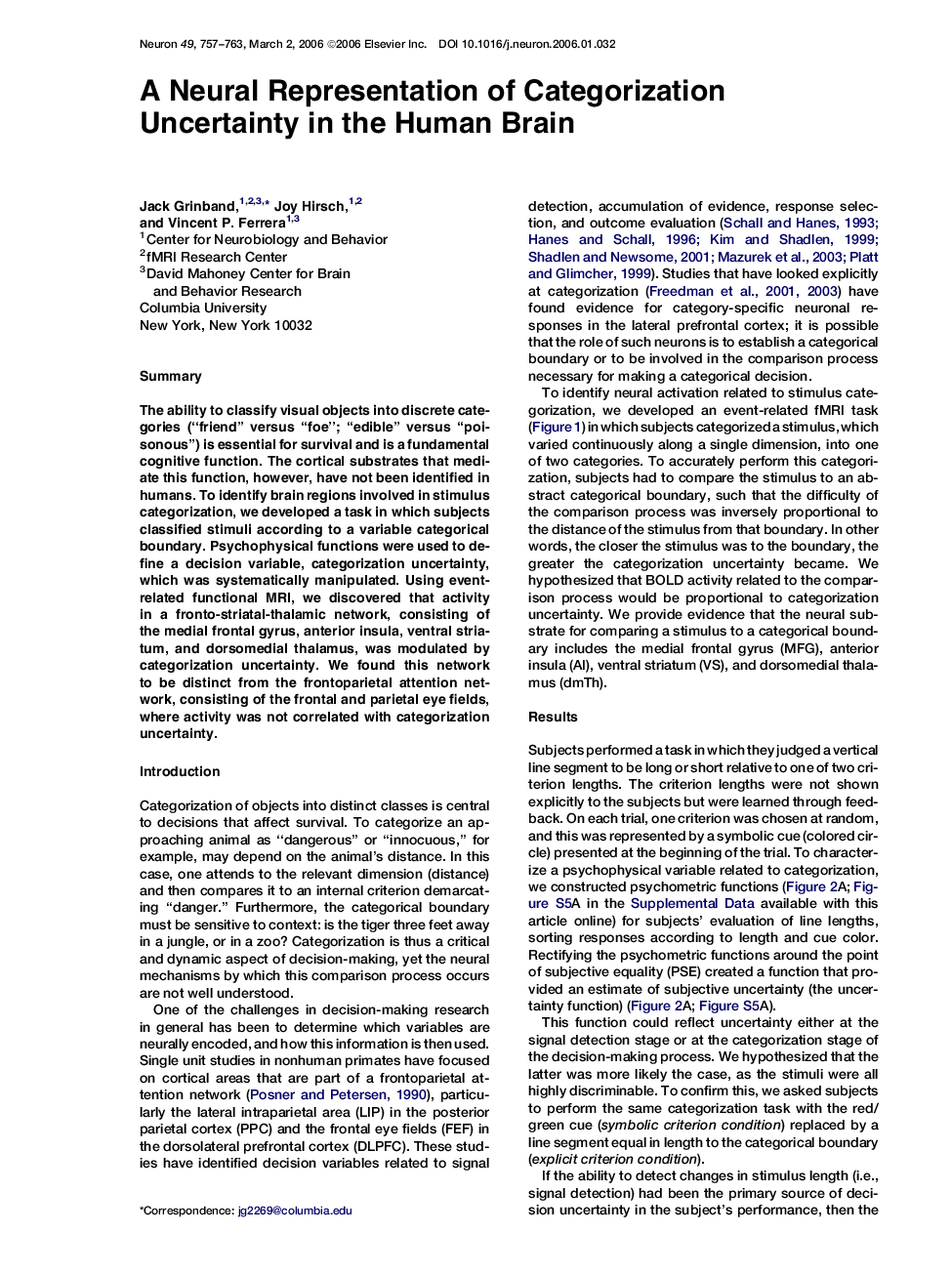| Article ID | Journal | Published Year | Pages | File Type |
|---|---|---|---|---|
| 4323412 | Neuron | 2006 | 7 Pages |
SummaryThe ability to classify visual objects into discrete categories (“friend” versus “foe”; “edible” versus “poisonous”) is essential for survival and is a fundamental cognitive function. The cortical substrates that mediate this function, however, have not been identified in humans. To identify brain regions involved in stimulus categorization, we developed a task in which subjects classified stimuli according to a variable categorical boundary. Psychophysical functions were used to define a decision variable, categorization uncertainty, which was systematically manipulated. Using event-related functional MRI, we discovered that activity in a fronto-striatal-thalamic network, consisting of the medial frontal gyrus, anterior insula, ventral striatum, and dorsomedial thalamus, was modulated by categorization uncertainty. We found this network to be distinct from the frontoparietal attention network, consisting of the frontal and parietal eye fields, where activity was not correlated with categorization uncertainty.
